Rabat was founded as an Arab army outpost in the 12th century and
given the generic name for military encampment, Ribat, which is still in
use today. For centuries Rabat and Salé were rival principalities, but
eventually Rabat began to dominate the area. Salé's power was ultimately
eclipsed altogether by its larger neighbour.
In the early 17th century, Rabat became a centre of anti-European
piracy centred at the stronghold of the Kasbah des Oudaias. Rabat was
first made a modern capital in 1912 by Morocco's French overlords, and
remained the nation's capital after independence in 1956. The city is
the residence of the royal family.
Nowdays, as Morocco's capital, Rabat is home to the country's most important
museum, the Royal Palace, and the Mausoleum of Mohamed V, as well as to
several historical attractions. Situated right on the Atlantic Ocean,
with the Bou Regreg River running to the west separating it from its
sister-city of Salé, Rabat is a pretty place.
It has a much calmer atmosphere than nearby Casablanca. And for many tourists, a visit to Rabat can be a pleasant surprise and a welcome break from the hustle of other Moroccan cities. History-fiends are sure to enjoy wandering the Chellah excavation area and exploring the lovely Oudaias Kasbah.
It has a much calmer atmosphere than nearby Casablanca. And for many tourists, a visit to Rabat can be a pleasant surprise and a welcome break from the hustle of other Moroccan cities. History-fiends are sure to enjoy wandering the Chellah excavation area and exploring the lovely Oudaias Kasbah.
1 Oudaias Kasbah
Rabat's Kasbah district is one of the city's top sightseeing draws. Inside the 11th century fortress walls, a tranquil and tiny neighbourhood of twisting white-and-blue lanes were built in Andalusian-style. It is a joy to visit and photograph. Also inside, on Rue el Jamma, is the Kasbah Mosque, built in 1150 and the oldest mosque in Rabat. The district has fine views over to Salé and the Atlantic Ocean.
2 Hassan Tower
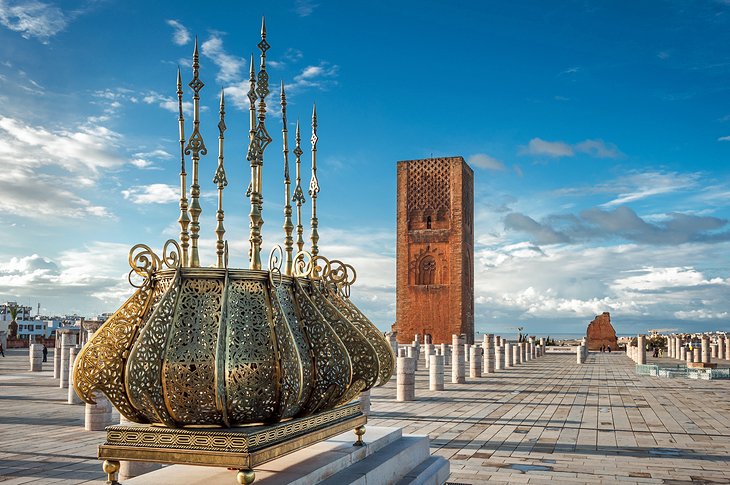
Built by the Almohads, the unfinished Hassan Tower was the
work of ruler Yacoub al-Mansour and would have been the minaret for his
grand vision of a mosque on this site. Upon his death in 1150,
construction was abandoned and this 45 m tower is all that remains of
his original plan. Beautiful and intricate motifs and designs cover the
tower's facade, pointing to the sumptuousness of what al-Mansour had in
mind. The Hassan Tower is next door to the Mausoleum of Mohamed V.
Location: Avenue Hassan II, Rabat
3 Mausoleum of Mohamed V
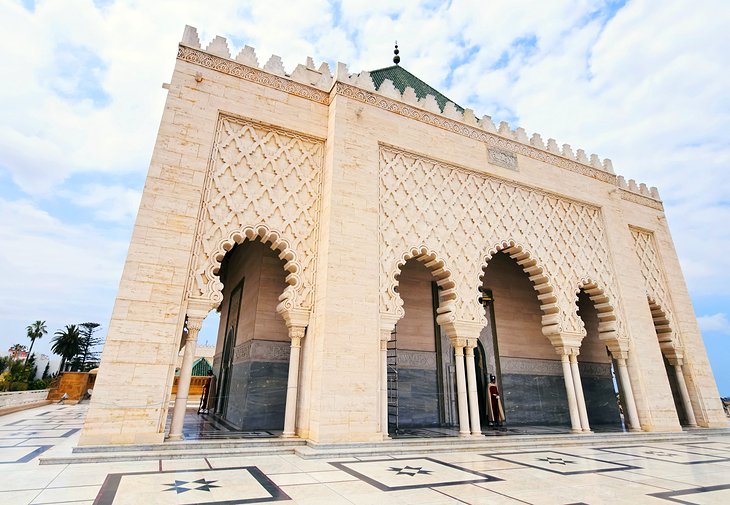
The glittering Mausoleum of King Mohamed V lies in state on
the very place where, upon his return from exile in Madagascar, he
gathered thousands of Moroccans together to thank God for giving
independence to their country. The opulent tomb chamber is a
showcase of Moroccan traditional design, and has a grand marble tomb and
walls covered in zellige tiles. Only Muslims can visit the adjoining
mosque.
4 Chellah Necropolis
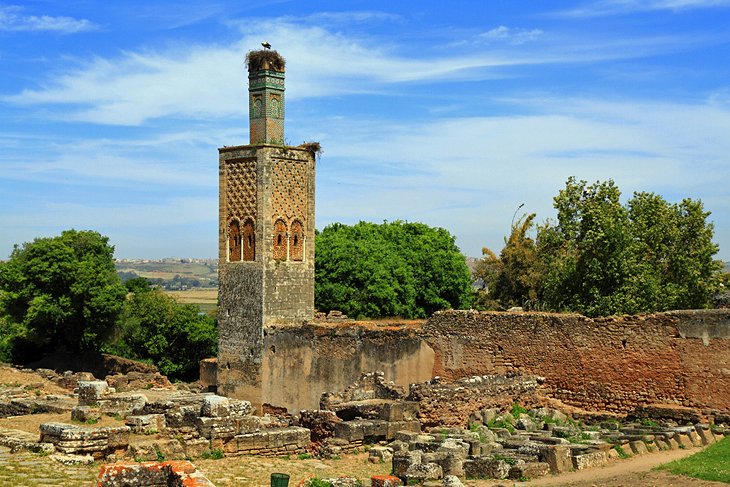
The remnants of the 14th century Merinid citadel-town of Chellah
are an atmospheric place. The walled ruins are positioned on an older
Roman town called Sala, which archaeologists uncovered evidence of in
the 1930s. Today, parts of both these settlements can be seen. Chellah
thrived as a Merinid citadel in the early 14th century. The crumbled
ruins of mosques and mausoleums they built here are now covered with
rambling brambles, providing nesting sites for storks. The excavated
Roman part of the site includes a forum, bath and temple. For a good
overview of the entire Chellah ruins, an overlooking terrace provides
excellent views across the site.
5 Oudaias Museum and the Andalusian Gardens

Within the Oudaias Kasbah are the lovely Andalusian Gardens, which were laid out in the early 20th century. The Oudaias Museum,
set within the gardens, is housed in the opulent 17th century lodge
built by Moulay Ismail as his first Rabat residence. At the far end of
the lodge, a room displays an ancient Moroccan interior. Cushions in
brocade, silk and gold cover the divans around the room. A little
further on, there is an exhibit of ancient illuminated Qur'ans,
jewellery, pottery and musical instruments.
6 Rabat Archaeology Museum
Built in 1932 and enlarged a few years later to display excavated finds, this museum
is home to Morocco's best archaeological collection. The prehistoric
section brings together human remains from the middle Palaeolithic
period to the Neolithic, illustrating the continuity and size of the
population at this time. Pre-Roman civilisations are well represented.
The Roman and Hellenistic exhibits are renowned, and the collection of bronzes is incredibly impressive. Even if you're not a museum-person, this is the one museum on your Morocco travels that you shouldn't miss.
The Roman and Hellenistic exhibits are renowned, and the collection of bronzes is incredibly impressive. Even if you're not a museum-person, this is the one museum on your Morocco travels that you shouldn't miss.
7 Medina
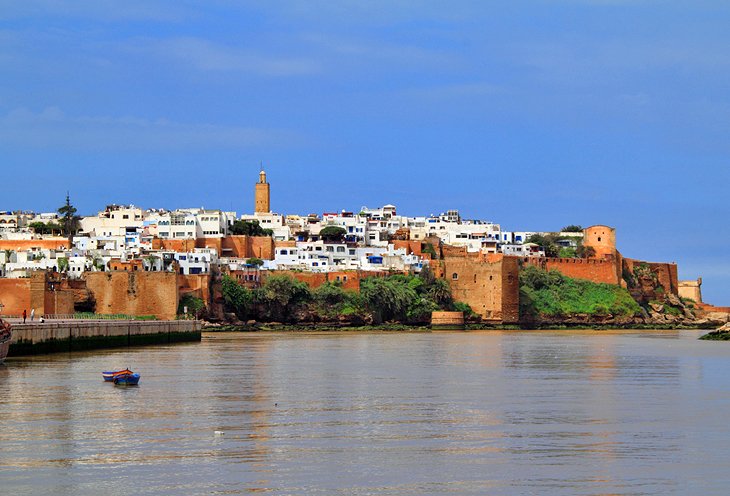
Rabat's rambling Medina area has a distinctly Andalusian style
to its buildings as most of the architecture here dates from the 17th
century when Muslims from Spain's Andalusia region arrived. This makes it very different to the Medina's of Fes and Marrakesh. The two best shopping streets are Souk es Sebbat and Rue Souka,
and there are a number of interesting buildings within the district
that make a wander here worthwhile. In particular look out for the Koubba Mosque on Rue Bou Kroun, and the Merinid Fountain and Grand Mosque both on Rue Souka. The Mellah (Jewish Quarter) is located in the southeast corner of the Medina and has an interesting flea market.
8 Royal Palace
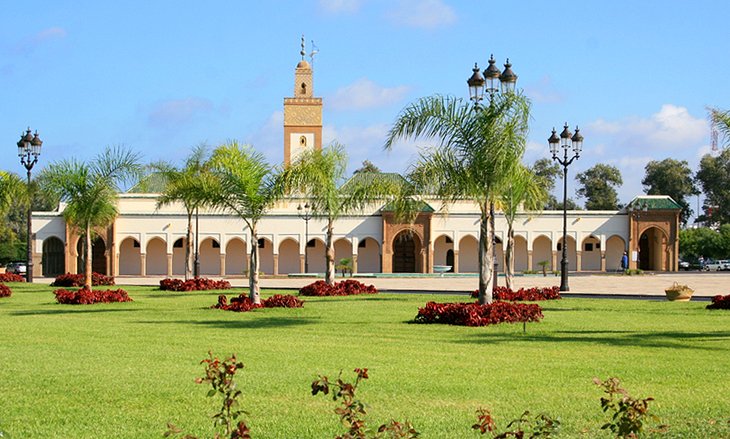
Construction of Rabat's Royal Palace began in 1864, and a wall
surrounds the sprawling building. The Fes el-Bali complex is not open
to the public as the current king still uses the palace as his
residence. You can get good photographs of the palace exterior from
nearby the Sunna Mosque.
9 New City
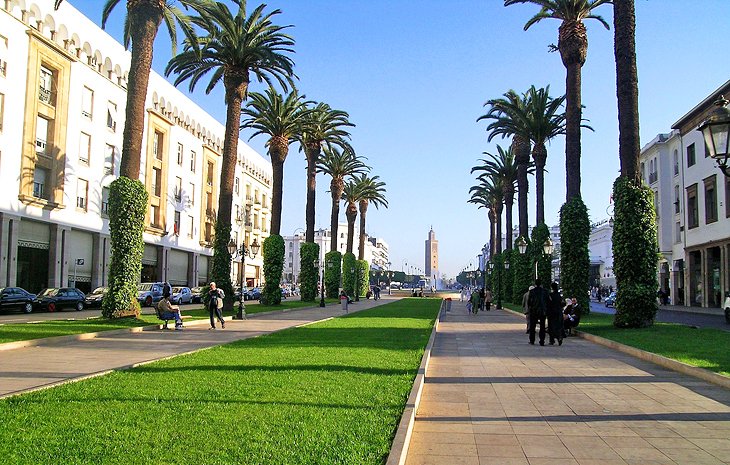
Rabat's Ville Nouvelle (New City) is home to the Archaeological Museum and also the surprisingly interesting Postal Museum
(on Avenue Mohamed V), which brings together a superb collection of
Moroccan stamps, telephones and telegraph machines. The streets of the
Ville Nouvelle host a wealth of French colonial architecture and are a
pleasant place for a stroll. Right on the district's edge, Avenue Hassan II follows the 17th century Undulations Wall separating the modern city from the Medina.
10 Abul Hassan Medersa
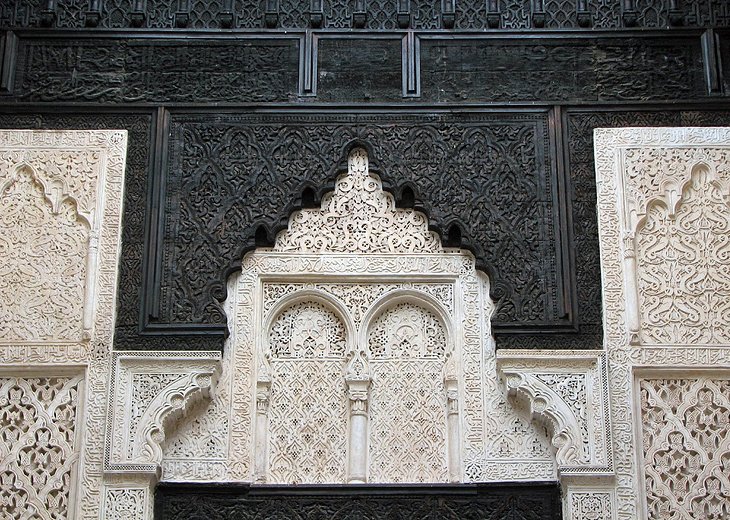
Directly across the Bou Regreg River, facing Rabat, the town of Salé is home to several interesting medersas (madrassa - Islamic school of learning) and mausoleums. In particular, the Abul Hassan Medersa
is worth a visit. It dates from the Merinid era in the 14th century and
has an interior covered with beautifully restored examples of
traditional religious decoration, including zellige tile-work and carved
wood panels. If you climb up to the roof you can get excellent views
across the water to Rabat.
11 Salé Medina
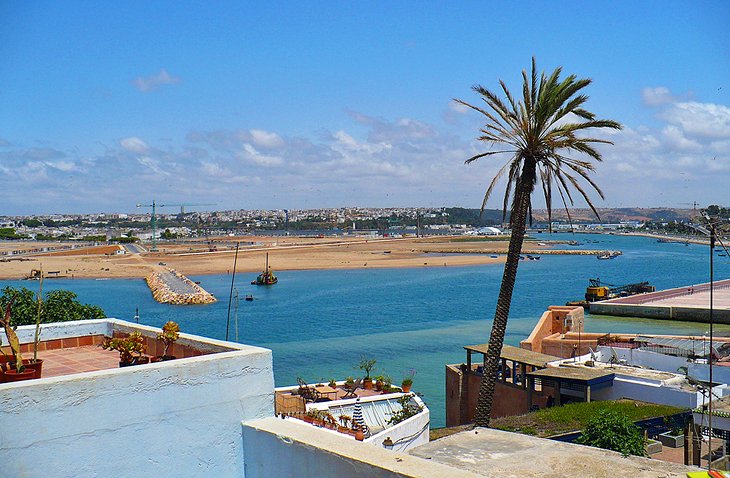
The Medina area in Salé is a quaint and picturesque place to spend a few hours in the afternoon. As well as the Abul Hassan Medersa, the district is also home to Salés' Grand Mosque, the Mausoleum of Sidi Ben Ashir with its photogenic whitewashed tomb, and the Fondouk (khan) al-Askour.
12 Kenitra
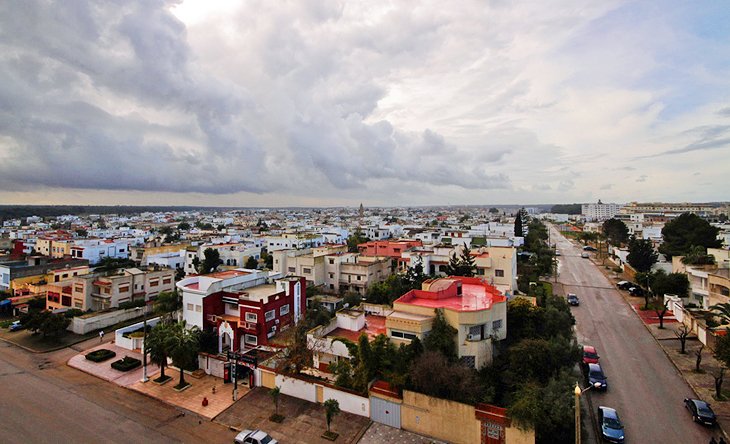
Established as a military fort by Morocco's first French Resident General in 1912, Kenitra is a modern town on the road to Tangier. Although the town doesn't have much to offer visitors, it's a great base for trips to nearby Mahdia with its long beach, a haven for windsurfers. Other nearby sightseeing attractions include the interesting Kasbah neighbourhood, and the Roman garrison site of Thamusida. The ruins of Thamusida include a temple, bath, housing and a large garrison camp area.
Location: 46 km north of Rabat
13 Temara
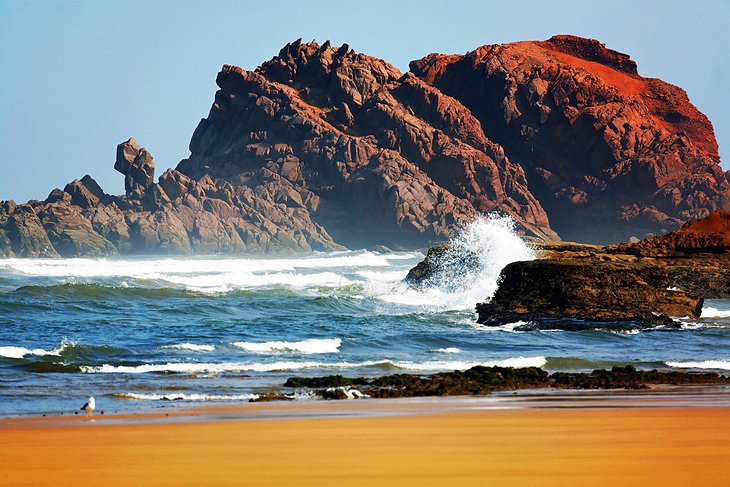
Temara is a favourite weekend and holiday beach for Rabat locals. The beach has natural bathing pools making it a great option for families with young children worried about the waves.
Location: 13 km from Rabat
14 Mamora Forest
The Mamora Forest is located southeast of Kenitra. The
forest's 134,000 trees include 50% of the cork trees in Morocco, but
there are also eucalyptus, pine, acacia and Mamora wild pear. There are
excellent bird-watching opportunities within the forest - look for white
storks and turtle doves.
15 Natural Science Museum
Rabat's Natural Science Museum has an impressive 150 million
year old skeleton of a Sauropod dinosaur on display. It was discovered
in 1979, in the High Atlas Azilal region. There are also exhibits on the
earth's geological origins.
Location: Agdal District, Rabat




















Brilliant post! I recently got my Netherlands Visa with the help of a professional consultancy. Since then I have been on the lookout for some interesting tourist attractions in the Netherlands. That is when one of my friends shared your blog. Although I am not in a position to visit the beautiful Rabat, I am looking for places that are similar to the ones that you shared in your blog. Hope I can find out some lovely attractions in the Netherlands and visit them next month.
ResponderEliminarThis captivating city of Rabat through its top-rated tourist attractions. From the iconic Hassan Tower to the historical charm of Chellah, Rabat offers a blend of ancient heritage and modern vibrancy. Discover the regal beauty of the Royal Palace and immerse yourself in Moroccan culture at the Museum Mohamed VI. Get Netherlands Visa from UK
ResponderEliminarI am pleased to read your experience about the rabat different places. Now, I am keen to explore the Medina there after enjoying the bus tours to washington dc.
ResponderEliminar